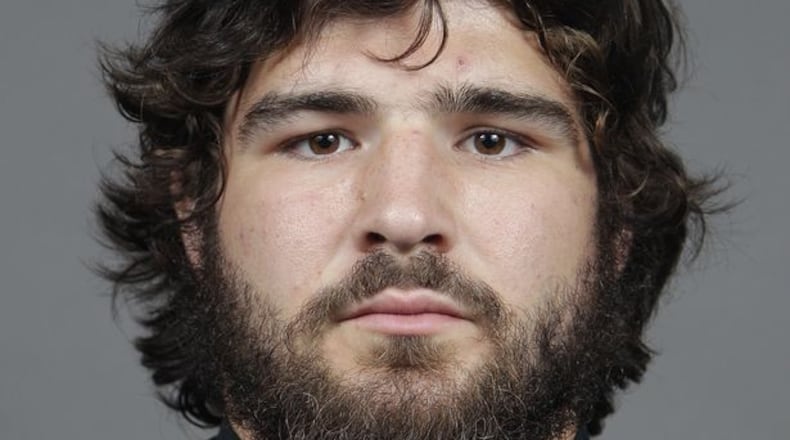It's a familiar story with a familiar ending: Kosta Karageorge, a football player at Ohio State University, went missing last week after he told his mother, in a note, that concussions had his head all messed up.
On Sunday, Karageorge was found in a dumpster near his apartment, dead from an apparent self-inflicted gunshot wound.
He is not the first football player to commit suicide. And his suicide is not the first to be linked to a history of concussions and physical trauma: In recent years, more and more evidence has appeared connecting the injuries sustained while playing football to chronic traumatic encephalopathy, an incurable, degenerative disease found in people with a history of brain trauma.
CTE has also been linked to boxing -- the sport from which it derived an earlier name, dementia pugilistica -- soccer and rugby. According to CNN, Karageorge was a walk-on at OSU and never played in a game, although he wrestled at the school for three years. His family said he has a history of sports-related concussions.
CTE has been linked with memory loss, impaired judgment, depression, aggression and dementia. It can only be diagnosed after death, a complication in efforts to broaden study of the disease. To aid research, a number of football players have donated their brains for study.
Though the condition most visibly afflicts professional and retired professional athletes, it is not immune to youth: In 2010, a University of Pennsylvania football player named Owen Thomas killed himself in his apartment -- and was later diagnosed with early stages of CTE, the first collegiate player (and the youngest) so diagnosed.
Here: eight football players who committed suicide and who have since been diagnosed with CTE.
Terry Long played as an offensive lineman for the Steelers in the '80s and early '90s. On June 7, 2005, he was found unresponsive in his Pittsburgh home after drinking antifreeze and died hours later. He was 45.
Andre Waters, a safety, played for both the Steelers and the Cardinals during his 11-year career. On Nov. 20, 2006, he shot himself in the head in his Tampa, Fla., home. He was 44.
Shane Dronett was a defensive lineman in the NFL from 1992-2002, ending his career with a five-year stretch playing for the Falcons. On Jan. 21, 2009, he shot and killed himself after menacing his wife with a gun in their Gwinnett County home. He was 48.
Dave Duerson was a safety whose 10-year career included stints with the Bears, the Giants and the Cardinals. On Feb. 17, 2011, he shot himself in the chest at his Florida home after complaining "of his deteriorating mental state during his final months." Before he died, Duerson left a note requesting that his brain be studied. He was 50.
Ray Easterling played for the Falcons from 1972 until he retired in 1979, a piece of the team's "Gritz Blitz" defense. In 2011, he joined several former NFL players in a suit against the league over its handling of concussion-related injuries. On April 19, 2012, Easterling shot himself in his Richmond, Va., home. He was 62.
Junior Seau was a linebacker whose nearly 20-year career included stints with the Chargers, Dolphins and Patriots. On May 2, 2012, he shot himself in his chest in his San Diego, Calif., home. He was 43.
Jovan Belcher was a linebacker for the Kansas City Chiefs from 2009 until his death in 2012. Before committing suicide on Dec. 1, Belcher shot and killed his girlfriend in front of her mother at their home. He was 25.
Paul Oliver, a Kennesaw native, played at the University of Georgia before joining the Chargers as a safety from 2007-10 and again in 2011. On Sept. 24, 2013, he shot and killed himself in his Marietta home. He was 29.
More news of the day:
Some of the terms used in this story have been updated for clarity.
About the Author
Keep Reading
The Latest
Featured


